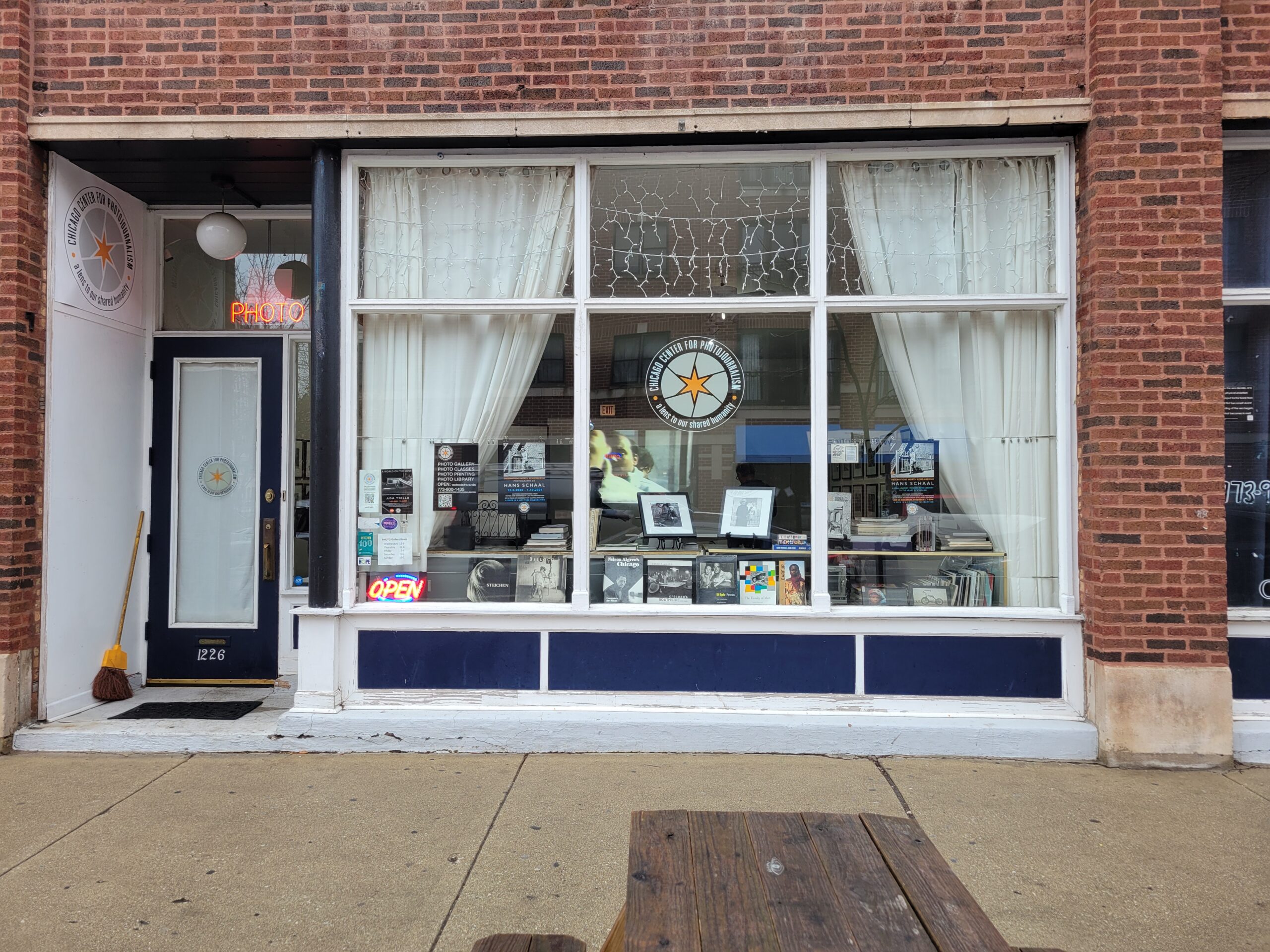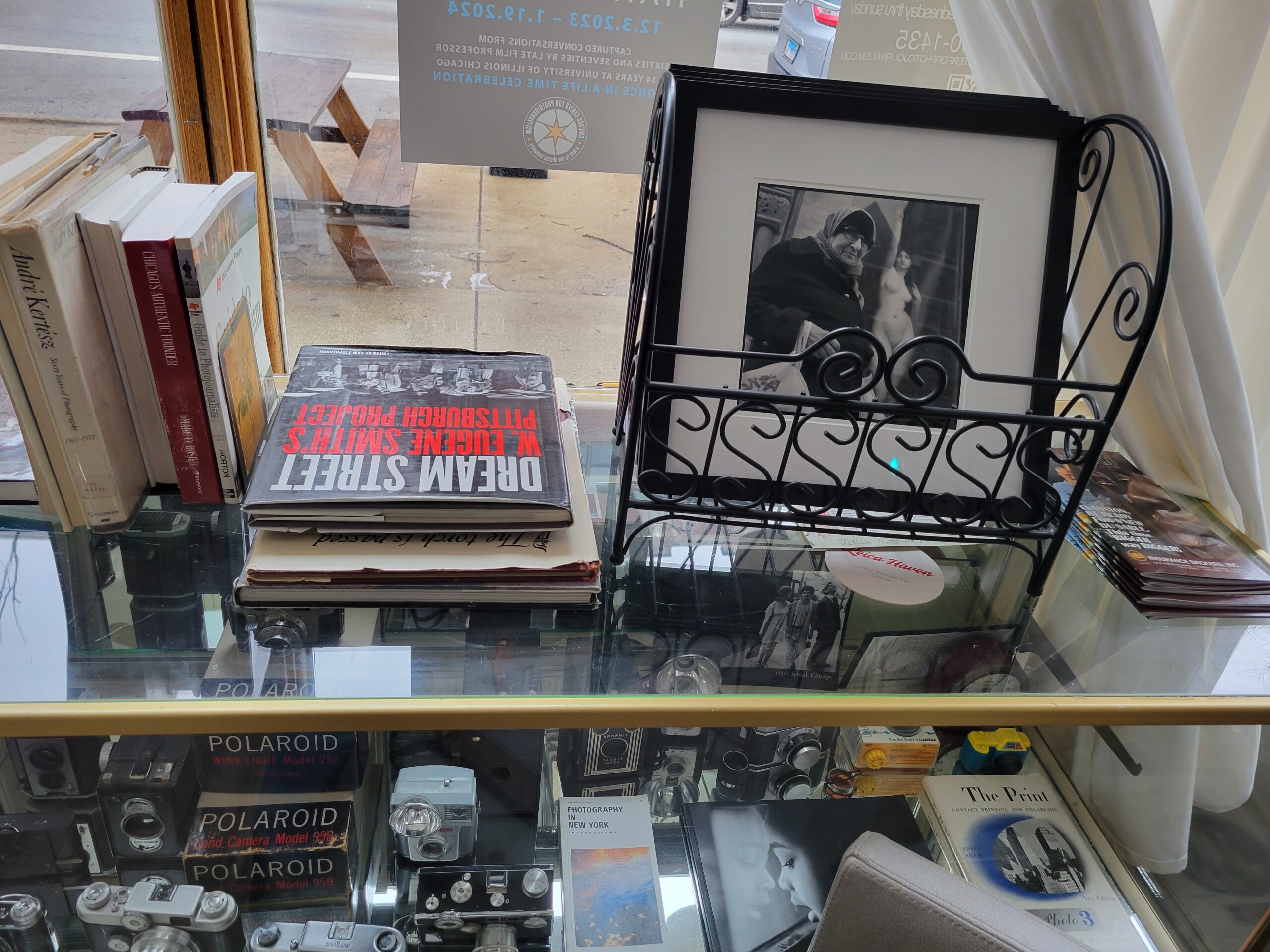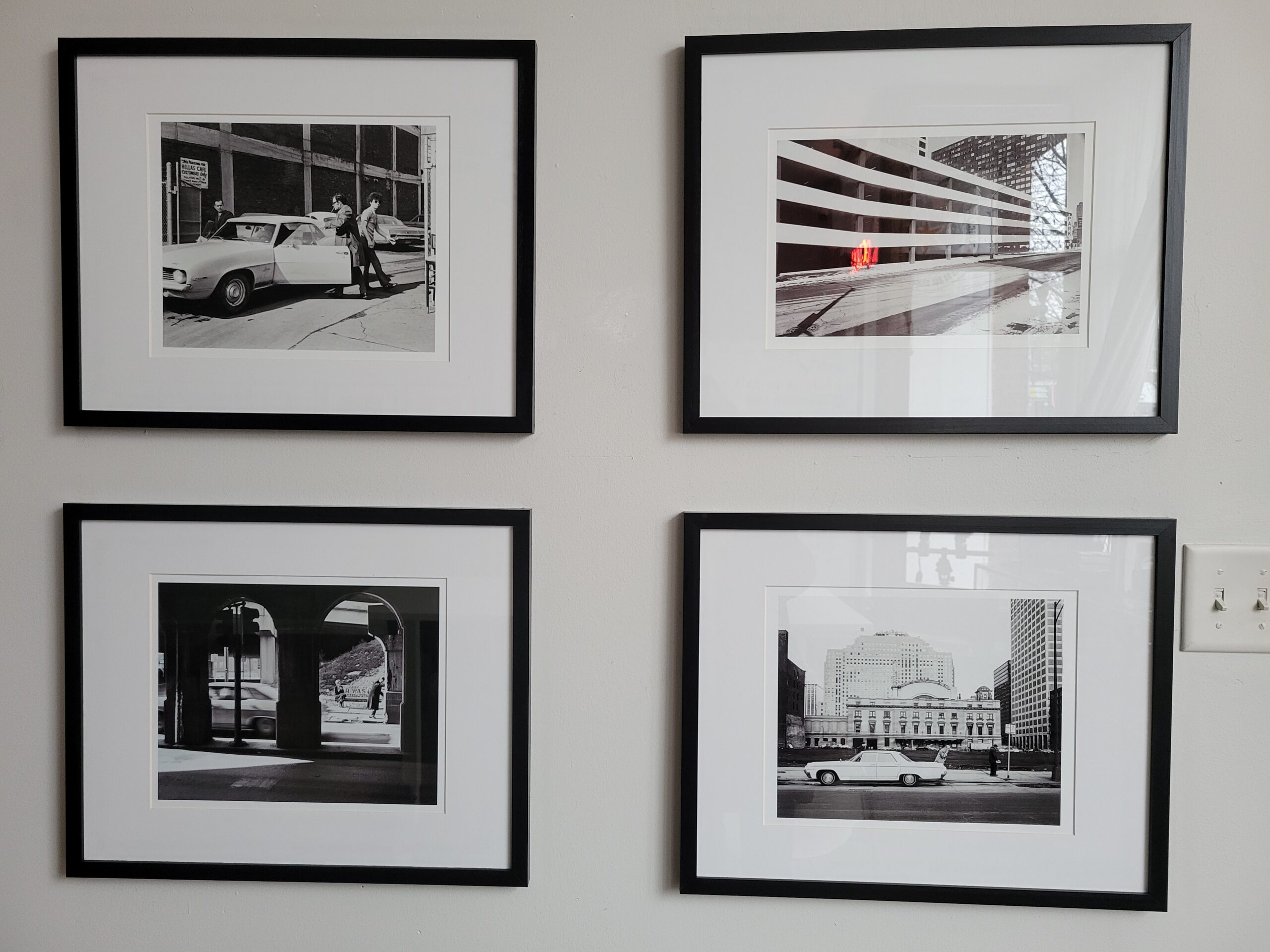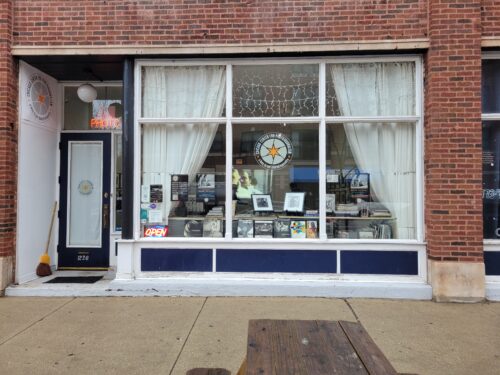By Ola Stepien

The storefront of the Chicago Center for Photojournalism (Photo Credit: Ola Stepien)
When Denise Keim thought about names for her new storefront gallery in Uptown, she settled on Magnolia Photo Gallery. However, her mentor advised against it.
“You should call it the Chicago Center for Photojournalism because that’s what it really is,” she repeated Steven Mayer’s reasoning. “It just happens to be in Uptown, and it just happens to be in Chicago, but really, it’s a center for photojournalism and visual storytelling.”
“So I listened to it. And so it’s a big, huge name. I was like, no, like, it was just huge. It was beyond my little seed of a storefront photo gallery. The name alone was so intense and bigger than I had dreamt of,” she said. “But, he was right. And it works. And I’m not competing with anybody. And it just worked. And because of that, world-class photographers are coming in here.”

A whiteboard you meet on your right when you enter the gallery that contains information for locals, events, and a table with similar items (Photo Credit: Ola Stepien)

A display of cameras (Photo Credit: Ola Stepien)
When she began her career, Keim moved to New York after earning her master’s in photography at Pennsylvania State University and applied for a Fulbright to Poland. While waiting for their decision, she interned for Mary Ellen Mark, a prominent woman photographer during the ’90s, during the day and waitressed at night.
In New York, she spent time at The 4th Street Photo Gallery, a ground-floor exhibition space for minority photographers, and got to know the owner, Alex Harsley. Through his space, Harsley was also able to support the community, as it gave access to visual storytelling to people who didn’t know about it, inspiring Keim to establish a similar space with the center.
“So there was a combination of supporting the photographers by giving them sort of a home base,” she recalled. “And the storefront, in particular, that meant that anybody had access to this world-class photography. So I’m really paying homage to Alex.”

Several photographs and books visitors can peruse while visiting (Photo Credit: Ola Stepien)

More books visitors can look through (Photo Credit: Ola Stepien)
After finishing her Fulbright in Poland, she returned to New York and worked as a freelance photographer, which she continued to do for the next 20 years of her career. Keim was also an adjunct professor, taught photography at workshops, and worked as a director.
During the pandemic lockdown, Keim moved back to Chicago to the Uptown neighborhood, admiring its diversity, affordability, lakefront, and architecture, “it just had all the things I wanted out of a neighborhood in Chicago.”

The storefront (Photo Credit: Ola Stepien)
Then, in October 2021, while walking her dogs through the neighborhood, she saw a storefront on Wilson Avenue for rent.
“It’s the perfect location: coffee shop, Red Line, neighborhood a block away,” she said. “Like it had all the things.”
While working toward getting the lease in November 2022, Keim met Mayer, who published food magazines and knew Uptown through SCORE, a nonprofit organization that helps small business owners with mentorship and workshops, earlier in January. When she told him about her idea, he responded candidly, “Denise, you’re right. There’s no place like this in the country that deals with documentary photography or photojournalism outside of universities that might have an art gallery,” he said. “And that’s still not focused on photojournalism or documentary photography, long-term projects, human rights issues.”

Photographs from Hans Schaal’s exhibit, “Observations Worth Remembering” (Photo Credit: Ola Stepien)

More photos from Schaal’s exhibit (Photo Credit: Ola Stepien)
After the center’s opening in March 2023, there have been several exhibitions by prominent photographers, photojournalists, and documentary film-makers like Yvette Marie Dostatni, who showcased the niche interests of people who find community despite their unconventionality; Jerry Pritikin, who showcased the early gay rights movement in the 70s in San Fransico, and images from Cubs games as the “Bleacher Preacher” capturing his love for the team and the sport; Alex Garcia, who showcased images from his time in Cuba, to tell the country’s story; Ada Trillo, who showcased a series of photos of refugees and migrants journey from Central America to the U.S. – Mexico border, and the crisis in Ukraine during the Russian invasion; and Hans Schaal, who showcased photos of moments worth remembering during the ’60s and ’70s in Chicago, New York and New Orleans.

Denise Keim (Left) and Mirko Popadic (Right) (Photo Credit: Ola Stepien)

Popadic, who worked on setting up for his lecture on Tuesday, Jan. 30 (Photo Credit: Ola Stepien)
In addition, the center has also hosted lectures by Glenda Drew and Jesse Drew, Alex Garica, and Mirko Popadic.
The center’s first exhibition this year comes from Keim’s students from her street photography, film camera workshop and photojournalism courses that she teaches at the center. The street photography and photojournalism courses are five-week sessions, while the analog film photography workshop is for three weeks and students enrolled through the center’s website.
“As We See It: Where Street Photography and Photojournalism Converge” will showcase Friday, Feb. 10, until March 22.
You can find the Chicago Center for Photojournalism at 1226 W. Wilson Ave., Chicago, IL, 60640
To learn more about the Chicago Center for Photojournalism, please visit: https://www.chicagocenterforphotojournalism.com/
To learn more about Denise Keim, please visit: https://www.denisekeim.com/







